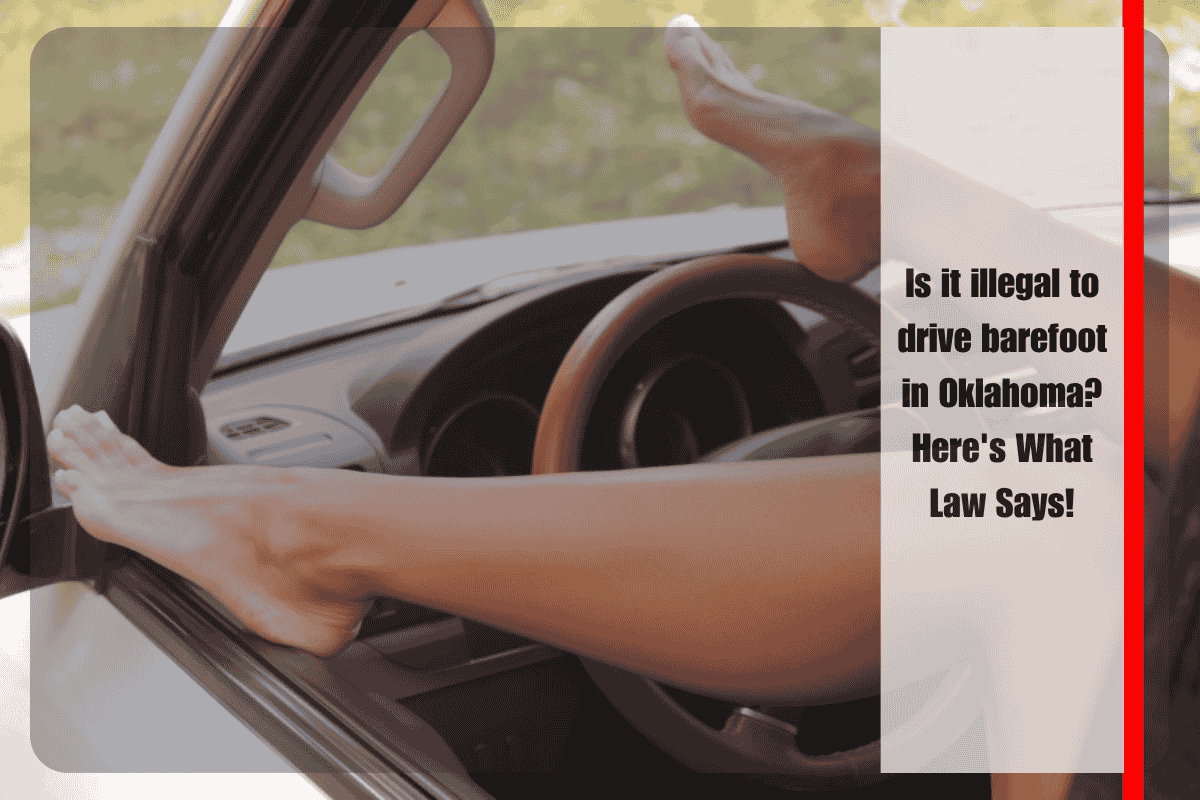Driving barefoot in Oklahoma is legal, and there is no law explicitly prohibiting operating a motor vehicle without footwear. Oklahoma’s traffic statutes do not impose any restrictions on whether a driver must wear shoes or any specific type of footwear to operate a vehicle on public roads. This means that from a purely legal standpoint, the choice to drive barefoot is left to the driver’s discretion without explicit penalties or violations associated with the practice.
However, despite the absence of a legal ban, driving barefoot is generally discouraged by safety experts and driving instructors. The primary concern revolves around the potential impact on a driver’s ability to control the vehicle safely. Shoes provide traction and protection, which can improve the precision and responsiveness when using pedals for braking, accelerating, and steering maneuvers. Bare feet, on the other hand, may give less grip on pedals, increasing the risk of the foot slipping, especially in situations requiring sudden or emergency braking or quick acceleration. This could lead to loss of control or delayed responses, which could contribute to accidents or unsafe driving conditions.
Another important consideration is comfort and injury prevention. Driving barefoot exposes the feet to possible injury from sharp objects inside the vehicle, hot pedals from long driving sessions, or situations where a driver might have to exit the car rapidly and navigate rough terrain or debris. Footwear also offers a buffer against burns in colder or hotter seasons, or against poisonous or harmful substances sometimes found on the floors of public or outdoor parking areas.
From the perspective of law enforcement and courts, while driving barefoot is not illegal on its own, it could become a factor if unsafe driving is observed or if an accident occurs. For instance, if a driver is pulled over for reckless or impaired driving, the absence of shoes could be taken into account as contributing to impaired vehicle control. In such cases, the driver could face charges for the primary offense (e.g., reckless driving, careless driving) and not specifically for barefoot driving. This means that while barefoot driving itself is not punishable, it could indirectly affect the outcome in a legal scenario where driver negligence or reduced control is alleged.
Moreover, some driving schools and instructors warn against barefoot driving because consistent safe-driving training often recommends proper footwear, suggesting shoes with thin, flexible soles to allow better pedal feel. Shoes that are too thick, heavy, or slippery may also impair pedal control, indicating that the appropriate footwear is an important factor in safe driving. Barefoot driving eliminates many risks associated with inappropriate or clunky shoes, but it simultaneously introduces other risks regarding traction and foot protection.
While Oklahoma law does not forbid driving barefoot and it is legal, it is not the safest practice. Drivers should weigh the personal comfort and safety risks of barefoot driving, especially in conditions demanding precise pedal control. Wearing proper shoes while driving promotes better vehicle handling and reduces the chance of accidents associated with poor pedal engagement. If involved in an accident or cited for unsafe driving, barefoot driving could be cited as a contributing factor, even though it is not an illegal behavior by itself in Oklahoma. For these reasons, it is generally advised to drive with appropriate footwear to ensure maximum control and safety on the road.
Sources
[1] https://collincountymagazine.com/2025/06/29/is-it-illegal-to-drive-barefoot-in-oklahoma-heres-what-law-says/
[2] https://www.kentmcguirelaw.com/blog/legal-to-drive-barefoot-in-oklahoma/
[3] https://1800lionlaw.com/is-it-illegal-to-drive-barefoot/
[4] https://www.myimprov.com/barefoot-driving-legal-but-not-recommended/
[5] https://www.directauto.com/learning-center/driving-laws-and-safety/is-it-illegal-to-drive-barefoot












